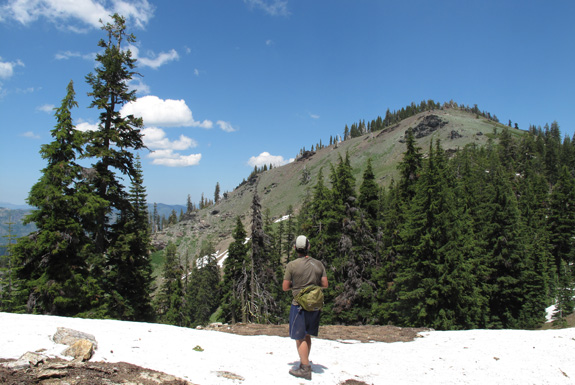Original Publication DATE: 7/15/2011
Box Camp Mountain | Marble Mountain Wilderness
Ecological amplitude is the range of habitats, often dependent on and defined by elevation, within which a certain species has the ability to survive. In the Klamath Mountains there are two species of pines that define the highest elevations–growing at or near the summits of peaks from ~7500′ to 9000′ (The Klamath Mountains get no higher). Foxtail pine (Pinus balfouriana) and whitebark pine (Pinus albicaulis) inhabit our sky islands where they are the crowning jewels of this coniferous wonderland.
Box Camp Mountain is interesting for several reasons. The first is that its summit is only 7,267′ yet both species of said pines live in this fringe habitat. This is generally on south-facing slopes where lack of competition from firs and hemlocks (which thrive on north-facing slopes) is minimal. When approaching the summit I began to doubt the reports of these pines being here; but in the last few hundred feet they began to appear. Throughout Holocene warming, these two species (and others) have slowly been retreating up regional mountains. Now, after thousands of years, they have reached their ecological climax on Box Camp–there is no more up on which to grow. This mountain holds the most formidably presumptive story I have attempted to read in a high elevation Klamath landscape–and what I read does not appears to have a happy ending.
Continue reading “Ecological Amplitude: A story of climax”